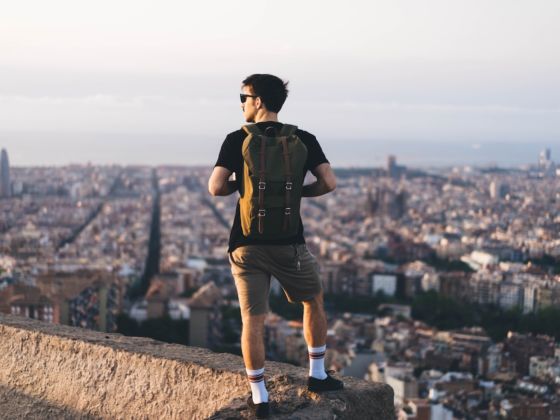I wake to heavy snow bending the little toyon bush outside the window. My throat tightens. I easily feel trapped — me, a woman who once felt terrified by the huge spaces of the Southwestern deserts. I put water to boil for coffee, pull on my boots, and go to the car.
There are decades of Up-State New York winter driving in my brain and hands. I bully and seduce the blue Vibe out of its parking space and up the long slope of the driveway to the curb. I sit for a few minutes to let my heart slow. If walking solo in wild places is your sustenance, you might know how trapped some can feel in town.
